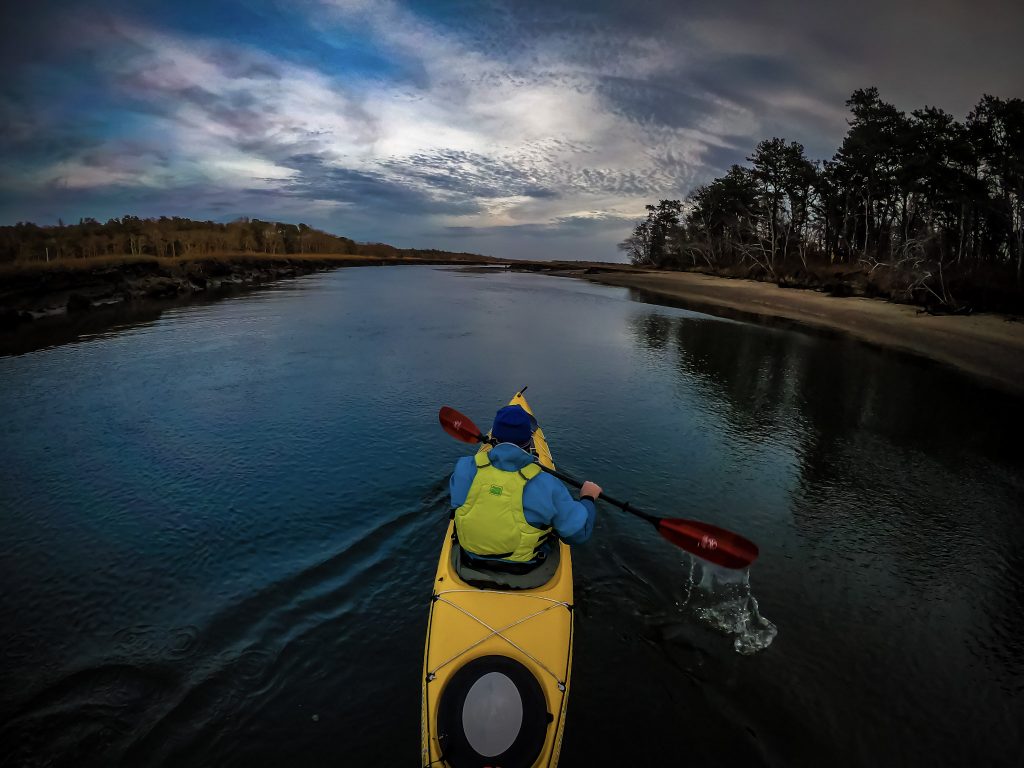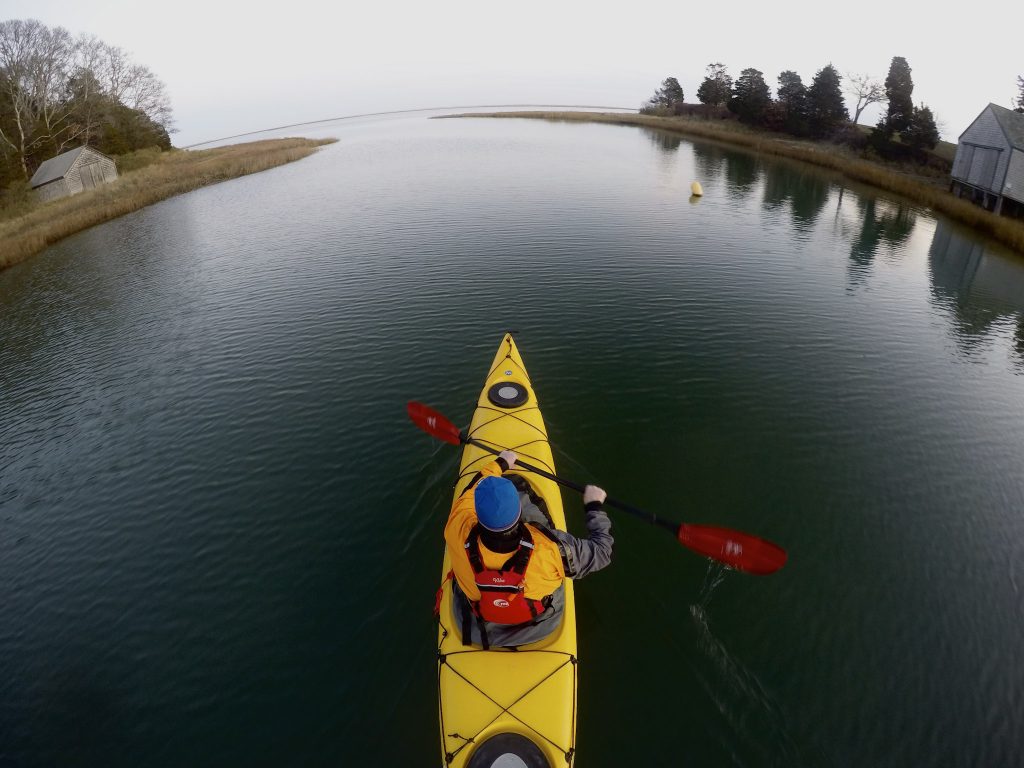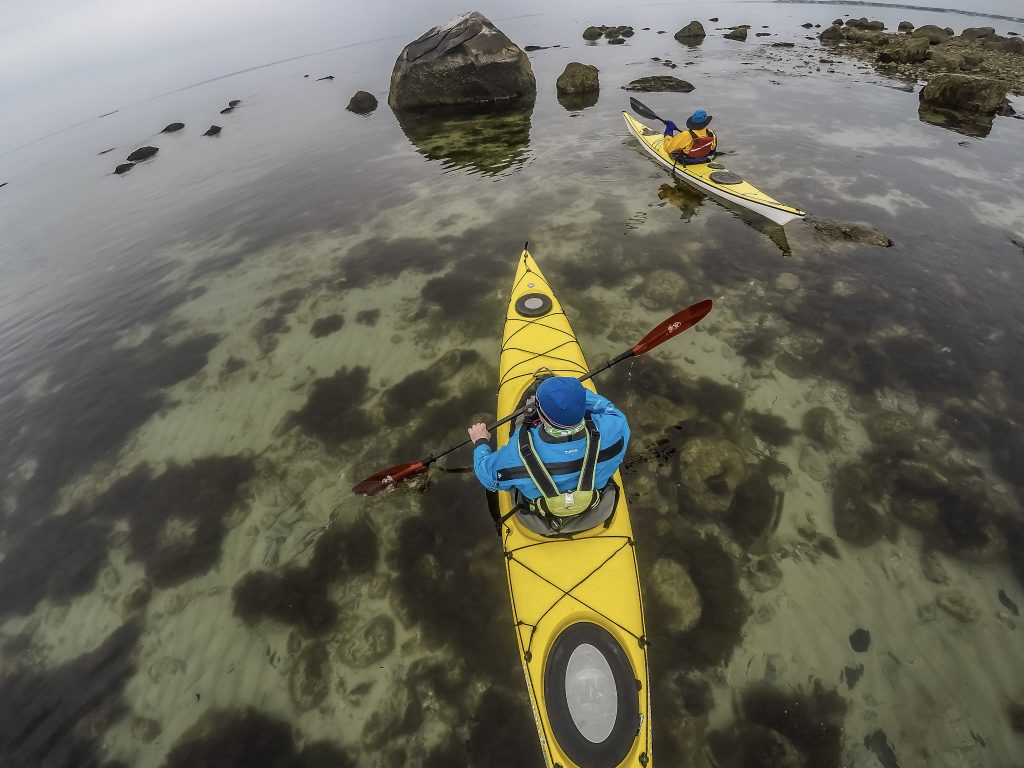With temperatures dropping and the water starting to get cold, paddling season is drawing to a close. Set yourself up for a strong start next spring by prepping your paddling gear for winter storage. Below are some tips to help you put your paddling gear away properly and avoid learning a lesson the hard way.

7 Tips to Prepare Your Paddling Gear for Winter Storage
1. Power Wash Your Boat
Whether it’s mud, mold, or dirty water, by this time of year my boat is usually pretty dirty. To avoid having a science project when I pull my kayak out next spring, I power wash it to clean off all the grime. After that, I’ll use Mr. Clean wipes to get off any remaining gunk. This should leave the boat looking pretty clean.
2. 303 Your Kayak, Hatch Covers, and Seats
The sun, specifically its UV rays, is tough on plastic and composite boats and can degrade rubber and nylon parts. Before putting my boat away for the winter, I treat it with 303 Aerospace Protectant—a spray that protects against UV damage—which helps keep it looking shiny and prevents its important parts from drying out and cracking.
3. Seal Your Kayak’s Hatches
Leaving the hatches on your kayak open sends an invitation to creatures looking for a winter home, which is why I ensure they’re on tight before retiring my boat for the winter. I also use a cockpit cover—although a heavy-duty trash bag is a low-cost alternative—to keep anything from taking up residence in the main body of my boat. Trust me, the last thing you want to discover on your first paddle in spring is that someone moved into your kayak’s cockpit, hatch, or bulkhead.
Pro tip: I pull the drain plug on my boats during the winter to allow ventilation and prevent condensation from building up in the boat.
4. Deter Critters From Calling Your Kayak Home
Battening down your boat’s hatches before winter is a great first step to preventing creatures from lodging in your kayak during the winter. That said, critters like mice and squirrels are persistent. I have several boats with hatches featuring teeth marks from resolute winter residents. To keep creatures at bay, I put dryer sheets in my hatches and cockpit—mice don’t like the smell and will steer clear. Other popular natural deterrents include packets of dry cayenne pepper, mint, and clove.

5. Store Your Boat in the Proper Position
If you store your kayak outside during the winter, position it on its side to avoid deformation. The edges of a kayak are the most structurally sound part of the boat and are best able to stand up to piles of heavy snow. If you store your kayak outside on a rack, make sure that it’s positioned deckside down, as the weight of snow and water accumulating on the deck can cause warping. Add an extra level of protection by placing a piece of plywood above your rack to keep the elements off your boat.
6. Separate Two-Piece Paddles
Separate two-piece paddles for winter storage. In fact, get in the habit of breaking down two-piece paddles whenever you’re storing them to reduce the odds of them becoming one-piece paddles. Before putting your paddle(s) away for winter, treat them with a coating of 303, making sure to get the joints and attachment points along with the blade and shaft.
Pro tip: If your garage is like mine (overflowing with outdoor gear), zip-tie the parts of the paddle together. Believe me, it’s shocking how easily a half of a paddle can go missing and how hard it can be to find.
7. Clean Your PFD
Before relegating your PFD to the gear room or paddling bin for winter, clean out its pockets. There’s nothing nastier than discovering a months-old, half-eaten energy bar on your first spring paddle. Once I’ve removed all the trash from my life vest, I give it a good scrub with dish soap and water to remove all the body oil, sweat, sunscreen, and bug spray that has built up over the paddling season. Finally, I treat my life jacket to a good coat of 303 and hit all the zippers with zipper wax before putting it into winter storage.

Other Winter Paddling Gear Storage Tips
With my kayak out of the water for the foreseeable future, I use the winter to catch up on any maintenance I put off during prime paddling season and check to make sure there are no issues that will haunt me in the spring. For example, I check the seals on my hatches, give decking a once over, unstick any troublesome rudders/skegs, and order any needed replacement parts. Ultimately, I set myself up for a successful spring paddling season.
How Do You Prepare Your Paddling Gear for Winter Storage?
Do you have a great tip for storing paddling gear over the winter? If so, tell us about it in the comments below.
Luke Foley
Luke Foley is passionate about discovering and sharing hidden local treasures and has long been a New England adventure enthusiast. After all, there are only a few places where you can skin for fresh tracks in the morning and have a sunset surf session on the same day.
Related Posts
April 2, 2024
10 Tips for Mountain Biking Etiquette During Mud Season
One rough spring could ruin the…




